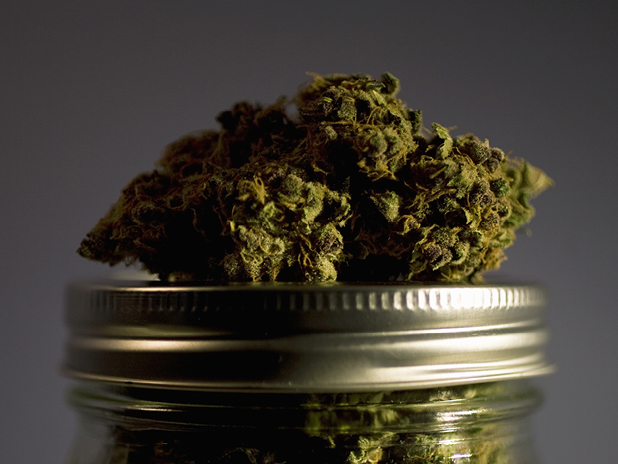Trail Blazer Rx: The Future of Legal Weed in Canada
Walters isn’t the only one in on the secret. Anyone who’s been paying attention knows that bud is about to get big, and there’s a long line of profiteers itching to get in on the action. Health Canada estimates that the country’s medical marijuana industry will be worth $1.3 billion by 2024, though others insist that it’s already bigger — particularly if you include the recreational market — and will only continue to grow. Case in point: the day that Tweed, an established marijuana grower, became the first producer to go public, it was the fourth-most traded stock on the TSX.
But Canadians have been lighting up for generations, so why all the buzz now? The answer starts with Terry Parker, the country’s first legal medical marijuana user. In a string of late-1990s court cases, the Toronto pot advocate convinced the court to recognize his legal right to cannabis as a means of treating his epilepsy. The case forced the government to set up a medical marijuana program that allowed people with certain ailments to obtain a licence to buy marijuana from a government producer, grow their own plants or designate someone else, like a relative or friend, to do it for them. The system was destined to fail, though. The government didn’t have enough inspectors to enforce regulations or monitor the quality of thousands of individual growers, and multiple patients ended up designating the same people to grow their plants, spawning large-scale grow-ops that often funnelled extra herb onto the black market.
To stem the abuse, Health Canada revoked its original system and implemented the revised Marihuana for Medical Purposes Regulations in April 2014. (A court injunction temporarily allowed existing patients to continue operating by the old regulations.) Under the new rules, patients with prescriptions for medical marijuana could purchase cannabis through a number of government-vetted licensed producers (LPs). By and large, the quality and consistency of Canadian cannabis improved, but so did the price of entry. Patients used to growing their own weed now had to cough up thousands of dollars a year for their medicine, and anyone interested in legally producing pot would need several million dollars just to get started.
To get an LP going, you have to have the capital to build a grow-op that meets Health Canada’s stringent security standards—the sort of Big Brother-like surveillance and triple-sign-in bureaucracy we encountered at Aphria. Then you need the proper equipment to process the product and monitor its quality and quantity. You need paid staff to tend to the plants, call-centre workers to deal with patients and a secure, user-friendly website to take online orders. And that’s to say nothing of the money involved in actually growing the damn stuff.
Such prohibitive costs essentially kicked cannabis activists and garage growers to the curb and replaced them with Bay Street big shots and Big Pharma barons — the only people with enough money, and investor appeal, to make a real go of it. Vic Neufeld, the former head of the Canadian pharmaceutical giant Jamieson Laboratories, is the CEO of Aphria; Tweed is run by Bruce Linton, a communications and tech tycoon who’s led numerous companies; and the team of scientists that comprise Bedrocan, another LP, has already struck gold with green in the Netherlands. CEO-types and past presidents run Canada’s 15 or so other up-and-running LPs, too, not to mention the 1,200 other companies anxiously hoping they’ll be next to get licensed.
They want in because, while the start-up costs are exorbitant, the payoff is poised to be even more outrageous. Cannabis in itself may not save any lives—it’s a treatment, not a cure—but its ability to wean people off opiates will. As medical marijuana goes mainstream, it’s likely to supplant more harmful medicines like oxycodone and morphine as a go-to remedy for a laundry list of illnesses and conditions: cancer, HIV/AIDS, Parkinson’s, ALS, anxiety, ADD and diabetes, to name just a few. Cost-conscious insurance companies will be on board because cannabis costs less than opiates and keeps people alive and paying premiums longer. Most patients will prefer pot for the price, too, and because it has fewer side effects—munchies notwithstanding. Estimates propose that roughly 400,000 Canadians will be using medical marijuana by 2024. With that many people smoking around a gram of weed a day, and with a gram of legal weed fetching an average of $7 to $12, you’d have to be high not to realize that the budding multi-billion-dollar industry is about to flower.
And that’s just dried, smokable medical marijuana. Cannabis extracts—which would allow for pot-based patches, pills, powders, oils, candies and other edibles—started making their way into British Columbia’s legal pot program after a provincial court ruling last August. The rest of the country is likely to follow suit, too, so long as a federal court case this spring goes the way everyone in the industry expects it to.
The introduction of extracts would create an entirely new market for cannabis edibles, and a slew of companies to make them. That’s good news for LPs, who would be able to save parts of the plant they previously trashed—Aphria, for one, throws away roughly 60 percent of every marijuana plant—and wholesale massive volumes of weed to companies that can turn them into everything from capsules to candy corn. In the increasingly likely event of legalization, that market would mushroom, as would tax revenues. By then, Big Tobacco and Big Alcohol will likely have found a way to jump on the bandwagon, too (here’s looking at you, Bud Light). “As soon as we get there, then it’s gloves off,” Walters predicts. “Because the money is going to be stupid.”










